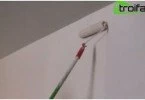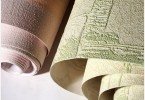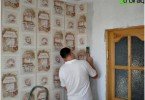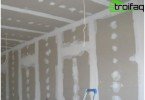How to better insulate the house from the inside
Thermal insulation will provide not only heat in the winter, but also cool in the summer. In addition, most modern heaters have good soundproofing qualities, which will allow you to feel comfortable, even if there is a busy highway near your home or nearby neighbors have started large-scale construction. It remains only to decide how to insulate the house – from the inside or outside. The vast majority of experts believe that external insulation is more effective. But sometimes, when the exterior decoration of the building is already completed, and the interior finishing work is just beginning, it is more advisable to lay thermal insulation from the premises.
Content
- The main task is wall insulation
- Material Selection Criteria
- Vapor-permeable insulation
- Thermal insulation for brick walls
- How to insulate the walls of a wooden house
The main task is wall insulation
Material Selection Criteria
The main danger that lies in wait for the home master who decided insulate walls from the inside, is mold. In the off-season, when the room temperature drops sharply, and the heating system is not yet turned on, the dew point may be between insulation and wall. This circumstance will inevitably lead to wet walls and mold. At the same time, the wall from the side of the apartment will remain completely dry, and the smell of dampness will constantly remind you of the presence of fungus.
Vapor-permeable insulation
In order to avoid this kind of trouble, you need to choose the right insulation. First of all, it is necessary to assess the vapor permeability of your home. If the house is built of wood or adobe – materials with high vapor permeability – it is necessary to pay special attention not only to the choice of heat-insulating material, but also the technology of its fastening. Such walls are best insulated with mineral wool, so as to provide good ventilation. The technology is quite simple, but each of its points requires strict observance:
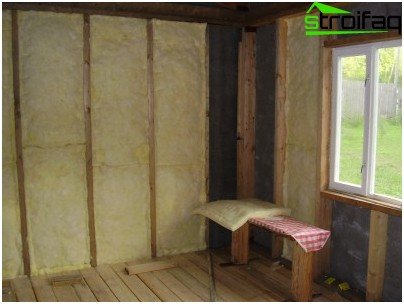
To insulate the walls of the house with mineral wool from the inside, it is recommended to build a frame of timber
- At a distance of 2-3 cm from the existing wall, it is necessary to build a false wall made of wood. To do this, with a step of 60 cm, vertical racks from the edged board are installed.
- Even before fixing the insulation on the inside of the raised wall, it is necessary to fix a nylon mesh or a vapor-permeable film.
- Then we fill the space between the boards with insulation.
- From the side of the room, we close the heat-insulating layer with a vapor-insulating film, the edges of which are fixed to the frame with metal brackets and be sure to glue with tape. This is necessary in order to protect the mineral wool from getting wet. This material is very afraid of moisture..
- Now the false wall can be sewn up with finishing material – drywall or decorative panels.
Important! When insulating walls from a material with high vapor permeability with mineral wool, it is very important to ensure good ventilation of the insulating material. To do this, in the lower part of the walls at a distance of about 1 m from each other, you need to make holes with a diameter of 15-25 mm. The same holes are made under the ceiling. It is necessary that the total area of the holes above is greater than the total area of the lower holes.
Thermal insulation for brick walls
If the walls of the house are built of high-quality brick or stone, that is, material with fairly low vapor permeability indicators, they can be insulated in the same way as wooden. But in order to save money, you can do without a ventilated gap and a wooden false wall.
It is enough just to build a partition from drywall at a distance from the wall equal to the thickness of the insulation. Before installing GKL sheets under the profiles, a heater is laid.
Important! Metal profiles can play the role of “cold bridges”. So it’s better to build a frame for GKL from wooden blocks.
How to insulate the walls of a wooden house
If your house is made of glued beams or logs, its thermal insulation primarily depends on the quality of the caulk. When building a new house, it is worth considering the use of modern materials for laying in the interventional space. As a rule, needle-punched felt is laid between the logs, and after the house shrinks, additional cracks will be caulked. In recent years, natural insulating material based on linen fibers has appeared on the market. It acquires special qualities as a result of the application of thermal bonding technology. This material is elastic enough to fill all the formed voids between the logs when the log house is shrinking.
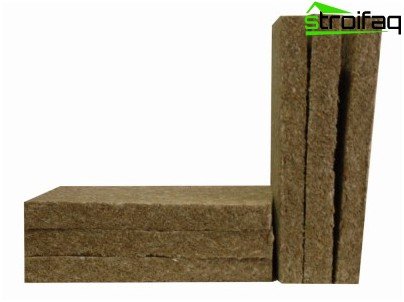
Sealant for intervent space for thermal performance is not inferior to mineral wool
Of course, a wooden house can also be insulated according to the technology described above using mineral wool. But if environmental friendliness of a heater is especially important for you – use linen mats. This material has the same thermal conductivity as mineral wool and provides significantly better sound insulation. In addition, due to its flame retardant treatment, it does not support combustion..
Important! When insulating walls from the inside, it is of great importance to ensure high-quality ventilation of the room. Ideally, you must provide forced ventilation. However, properly organized natural ventilation will be sufficient. Perfectly help ensure its windows with ventilation valves.
Heat won’t go through the ceiling!
A significant part of the thermal energy leaves your house precisely through the ceiling, and, therefore, it is also necessary to insulate it. As a rule, this is done by the attic. If for some reason the attic is not available, you can lay insulation from the side of the room.
Insulation tab for suspended structure
If the ceiling in your house is high enough, an excellent way to insulate and level it at the same time is a suspended structure. It can be sheathed with drywall or plastic panels. In this case, proceed as follows:
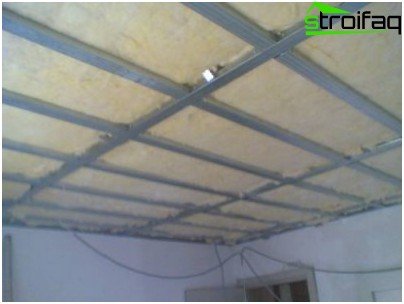
Suspension structure made of metal profile for fixing heat-insulating material
- We assemble on the ceiling a structure of metal profiles.
- Under the profiles we lay mineral wool.
- Between drywall and insulation, we necessarily lay a layer of a vapor barrier film, the joints of which are glued with adhesive tape.
- We plaster the ceiling.
How to insulate a low ceiling
If lowering the ceiling level is not desirable, it is better to do without suspended structures. It remains only to stick insulation directly to the ceiling. Of course, using mineral wool and linen mats in this case will not work, but polystyrene or aerated concrete slabs are quite suitable. The installation technology here is quite simple – they just need to be glued.
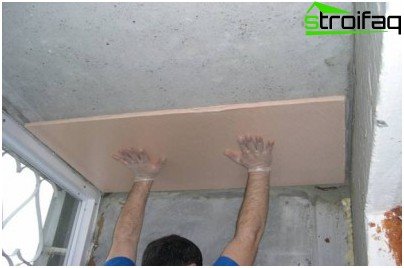
Ceiling insulation is most often carried out by extruded polystyrene foam or polystyrene.
So let’s get started:
- First of all, it is necessary to clean the ceiling of old finishing materials: remove wallpaper or paint, wash off the whitewash. If the paint cannot be completely removed, scratch its surface sufficiently.
- Treat the ceiling with a deep penetration primer containing antifungal additives. Wait for it to dry completely..
- The turn of a heater has come. Both styrofoam and aerated concrete are light enough to hold them on glue. When working with polystyrene plates, the adhesive must not be applied to the entire surface, but only along the edges and in the center. The slight curvature of the ceiling can be corrected by adjusting the adhesive layer..
Important! When choosing a foam for insulation of the ceiling, pay particular attention to extruded polystyrene foam. This material has low thermal conductivity and, most importantly, a sufficiently dense surface, which is excellent for further puttying..
- If you opted for aerated concrete slabs, purchase a spatula with a serrated edge and use it to apply glue to the entire surface of the slab. Arrange the insulation in a checkerboard pattern.
- When the whole ceiling is glued, aerated concrete slabs must be primed. Polyfoam does not need a primer.
- Now we stretch the paint net and putty the ceiling.
Methods of floor insulation
Another area of probable heat loss is the floor. The easiest way to reduce them will be to buy a thick insulated linoleum or carpet.
This, of course, is a temporary measure, and it will not completely solve the problem. The choice of floor insulation method depends on its design.
How to insulate a wooden floor
Before proceeding with the thermal insulation of a wooden floor, make sure its strength. Tear off a few boards and check the safety of the carrier beams. If everything is in order, you can get to work.
- To ensure waterproofing of the insulation, cover the floor with roofing material or with a “barrier barrier” film.
- On the entire surface of the floor, at a distance of 1 m from each other, lay wooden blocks with a thickness of about 50-70 mm.
- In between the bars, tightly lay the insulation so that the gaps between the sheets are as small as possible.
- When using mineral wool, it is necessary to protect it from moisture from the room with a vapor barrier film.
- Now it remains only to lay the final floor. The material for it can be a edged board, chipboard or USB-plate.
How to insulate a concrete floor
It is possible to insulate a concrete floor in the same way as a wooden floor, or you can use the “floating floor” technology.
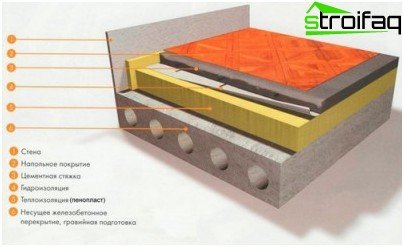
Concrete floor insulation scheme
Enough for this:
- Clean old dust and debris.
- Put glassine or ruberoid.
- Lay a layer of insulating material.
Important! Using the “floating floor” method, specialists prefer the use of foam or extruded polystyrene foam. This material is more resistant to moisture and can withstand large static loads..
- Again a layer of waterproofing
- Now you need to fill the concrete screed with a layer of about 60mm.
Thermal imager – a device for determining heat loss
If you cannot independently determine which way the heat leaves your home, consult a professional. Using a thermal imager to find the source of the leak is not difficult. Such a study will help you significantly save on useless insulation of already well-isolated areas of the house. The device operates in the infrared spectrum, which allows it to “see” the warmest and coldest areas of the house.

Thermal imager – a device for determining heat loss allows you to accurately determine the presence of zones, points, sections that allow heat to pass outside
In the resulting thermal image, you will clearly see poorly insulated places. It is worthwhile to conduct such a study in the cold season, having previously thoroughly thrown the room. The difference between the ambient temperature and the temperature in the room should be more than 15 degrees.
Now you know how to make your home warm and cozy. Given the cost of energy, thermal insulation of a home is also becoming a fairly profitable event. Once you invest in warming your home, you will not only ensure a comfortable life for your loved ones, but also be able to save a “tidy” amount on utility bills every month. In addition, poorly insulated walls often become damp, which in turn provokes the growth of molds. And this is not only a very unpleasant smell, but also a real threat to the health of your loved ones.


